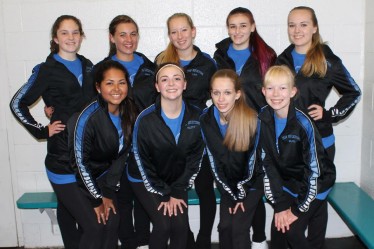What is synchronized skating?
Synchronized skating is a team sport in which 8-20 individual skaters join as one to perform a program in a competition or show. Judges look for specific elements including blocks, circles, wheels, lines, intersections, moves in isolation, etc. It is characterized by teamwork, speed, intricate formations and challenging step sequences. There are fourteen different levels, each level specifically for your age and skill level.
Synchro began around 50 years ago in Ann Arbor, Michigan at the University of Michigan. In 1976 Dr. Richard Porter organized the first group of team skaters. In honor of Dr. Porter, twenty years ago the Porter Classic was created.
There are three different regions in the United States for Synchronized skating: Pacific Coast, Midwestern, and Eastern. Each region has small competitions in which any team is allowed to participate in. It’s not completely necessary to participate in these competitions, however, it is strongly recommended.
Each competition has multiple sets of judges, whose job is to rate the elements of your team’s program and then rank you according to your performance against your competitors. The main purpose of these competitions is to give you feedback from a judges point of view whether or not to remove, add, or improve specific elements within the program. But we all know that the ‘real’ purpose of these competitions is to build up your team’s street cred.
Continuing on you have Sectionals, Nationals, and Worlds, but that’s a story for another time.
This season has started out slowly, we have 4 weeks until our first time skating our program in front of judges at Capital Critique. Capital Critique is exactly what it sounds like; it’s a time where judges watch your team’s program twice, one right after the other, and they critique it. Most of the time this means that they will tell you whether or not something is working, and if you should take out an element or add an element to improve the program. This is also a time for them to tell your coaches if you are meeting all the requirements for the level in which you are competing.
Leading up to Capital Critique our team practices together once a week for 3-4 hours. Two hours of the practice is on ice and the rest off ice. Beyond this, you are required to have one private lesson with your coach of choice and skate at least twice a week outside of team practice and individual lessons.
The life of a skater is busy, demanding, and difficult, but somehow we manage to make it through with the support of the team, and of course laughing at our failures and then fixing them. Synchro isn’t an individual sport, it’s definitely a team effort.

